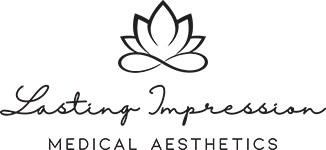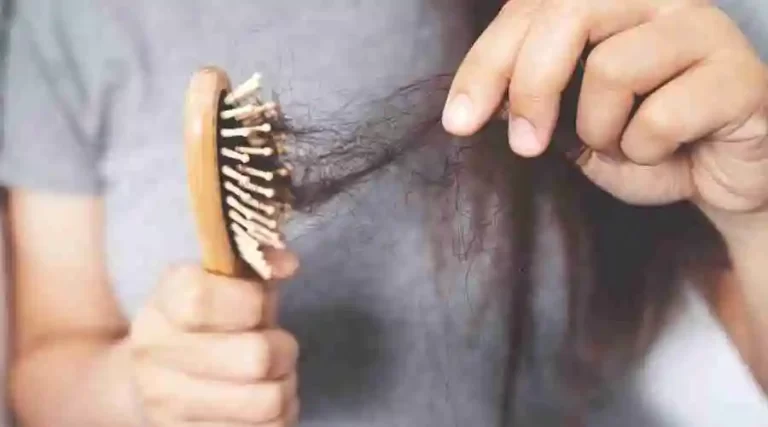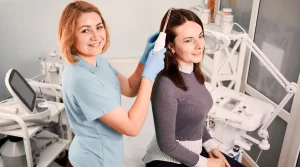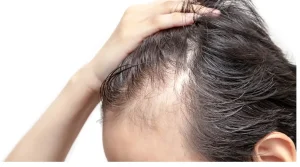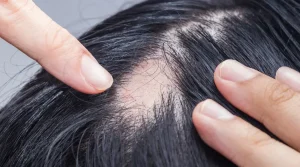There is a wide variety of treatment alternatives available to assist prevent further hair loss. Finasteride and minoxidil are the therapies that have proven to be the most successful, how
DISCLAIMER
Please contact your healthcare practitioner if you have any questions or concerns regarding your medical condition. The articles on Health Guide are supported by research that has been examined by experts in the field and information obtained from professional medical organizations and government bodies. However, they are not intended to replace the advice, diagnosis, or treatment provided by a qualified medical expert.
There are millions of people who suffer from hair loss, but it does not imply that you have to just accept it and live with it. Androgenic alopecia, most commonly referred to as male pattern baldness (MPB), can be diagnosed in individuals who experience thinning hair or a thinning hairline. The good news is that there has never been a greater number of tactics that you can use to prevent further hair loss and stimulate the growth of new hair. Continue reading if you want to find out more.
Six different approaches to halt and even reverse hair loss
It is not always feasible to reverse hair loss, but beginning treatment as soon as possible increases the likelihood that you will experience positive outcomes. Using the following scientifically supported remedies, many people have reported that they were able to stop or delay the progression of their hair loss, and in some cases, even regrow their hair.
1. Take finasteride
One of the most common medications prescribed for the treatment of baldness is finasteride, also known by its brand name, Propecia (for important safety information, see below). Dihydrotestosterone, or DHT, is a hormone that negatively impacts hair follicles and is a contributing factor in hair loss. This treatment is effective because it lowers DHT levels (Salisbury, 2021).
According to studies, over eighty percent of men who use finasteride experience a reduction in their rate of hair loss. It is essential to be aware that some people who take finasteride experience adverse sexual effects, such as a diminished desire to engage in sexual activity or erectile difficulties. This medicine should never be taken by young people or women who are pregnant (Manabe, 2018; Zito, 2022).
2. Use minoxidil
Minoxidil, sold under the brand name Rogaine, is available as an over-the-counter liquid or foam that is rubbed into the scalp on a daily and twice-daily basis. It does this by increasing the flow of blood to the hair follicles, which in turn stimulates hair growth (Badri, 2021).
Minoxidil seems to perform best for younger males (under 40) who have been having hair loss for less than five years. Additionally, the duration of hair loss should be less than five years. It is possible that it will not be as effective once the hair loss has been going on for a longer period of time and has spread to involve a larger portion of the scalp (Badri, 2021).
According to a number of studies, the combination of minoxidil and finasteride is superior to the use of either medication individually in treating some types of hair loss (Chen, 2020). It is important to keep in mind that it is crucial to continue using the meds in order to continue experiencing results. If you stop using them, any new hair growth may revert, and your male pattern hair loss may pick up where it left off.
3. Employ the use of an LLLT device
It might sound like something out of a science fiction novel to put a laser wand to your head in the hopes of regrowing your hair, but real experts believe it’s possible. Low-level laser therapy, often known as LLLT, is a method that has been given the OK by the FDA to treat hair loss. These gadgets, which include a red LED light that shines continuously, can be purchased in the shape of a wand that is directed towards the scalp or as a cap that is worn. Researchers have a hypothesis that low-level laser therapy (LLLT) could stimulate new hair growth by activating hair follicle stem cells (Egger, 2020).
Studies have shown that all three of the treatments discussed above—minoxidil, finasteride, and LLLT—are more effective at regrowing hair than a placebo. All of these treatments are successful in stimulating hair growth in individuals who suffer from male pattern baldness (Adil, 2017).
4. Consume an adequate amount of vitamins and minerals
Lorem ipsum dolor sit amet, consectetur adipiscing elit. Ut elit tellus, luctus nec ullamcorper mattis, pulvinar dapibus leo.
There are two notable exceptions to the general rule that most vitamins and supplements are not effective against hair loss; however, there are a lot of vitamins and nutritional supplements on the market that claim to regrow hair, make it thicker, or make it shiner; however, there is little hard evidence that most vitamins and supplements can help with hair loss (Almohanna, 2019).
It’s possible that taking nutritional supplements could help thicken your hair if you’re suffering from a vitamin D or iron deficiency. This is especially the case if you have a specific form of hair loss, such as male pattern baldness, alopecia areata (hair loss caused by an attack on the hair follicles by the immune system), or telogen effluvium (temporary hair loss caused by shock, stress, or trauma) (Almohanna, 2019).
- When the skin is exposed to sunlight, the body will manufacture its own vitamin D. This process takes place naturally. We also receive it in foods like milk and eggs. However, a significant number of us do not consume enough vitamin D. If you notice that your hair is getting thinner, you should probably have your vitamin D level examined by a medical professional.
- Iron is a mineral that may be obtained through a person’s diet, and is particularly prevalent in foods such as red meat and spinach. Iron insufficiency is another prevalent condition, especially among women. Anemia can be caused by not getting enough iron in your diet (when you have low blood, and cell counts). Additionally, your healthcare professional can determine your current iron levels.
5. Consider using a shampoo that blocks DHT
Many brands of shampoo make claim that they can counteract the effects that DHT has on hair follicles. Although they are not as effective as minoxidil or finasteride, some people do feel that they are helpful. Ketoconazole can be found in more than one of these shampoos (the active ingredient in the dandruff shampoo Nizoral). Ketoconazole, in conjunction with other hair loss medications such as finasteride, is thought by researchers to have the potential to prevent the destructive effects of DHT on hair follicles (Fields, 2020).
6. Obtain a treatment called PRP
This treatment, which is also known as “platelet-rich plasma,” includes drawing blood from the patient, spinning the blood in a centrifuge to separate the plasma, and then injecting the plasma into the patient’s scalp. The growth factors contained in platelets are thought to be able to stimulate new hair growth. Studies have shown that platelet-rich plasma (PRP) treatments, whether used on their own or in combination with other hair loss treatments, can boost hair growth (Gupta, 2019).
How to stop your head from going bald
Unfortunately, there is no foolproof way to stop your hair from falling out. One of the most prevalent factors contributing to age-related hair loss and male-pattern baldness is a person’s family history, which is something that cannot be altered. On the other hand, if you take care of your overall health and maintain a routine that is good for your hair, you can help prevent your problem from becoming even worse. When you first become aware of your hair thinning, it may be beneficial to implement the tactics outlined above as soon as possible in order to achieve the best possible results.
The following are some of the ways that maintaining healthy hair care and styling practices might help avoid balding: (Bloch, 2019)
- Steer clear of utilizing really high heat on your hair (e.g., high heat hairdryers).
- Avoid using shampoos, conditioners, and styling products that include harsh chemicals or bleach.
- Don’t over-brush (your hair does not need 100 strokes a day).
- Avoid haircuts that cause a lot of tension (like tight braids or ponytails).
